IoA Placement 2021-22: Victoria’s year with ASE
26 August 2022
Over the last year we’ve had UCL Institute of Archaeology students undertaking their work placement with ASE. We caught up with Victoria Igary to ask about her time with us, from favourite find to next steps. Read on to gain the insight of an early career archaeology student!...
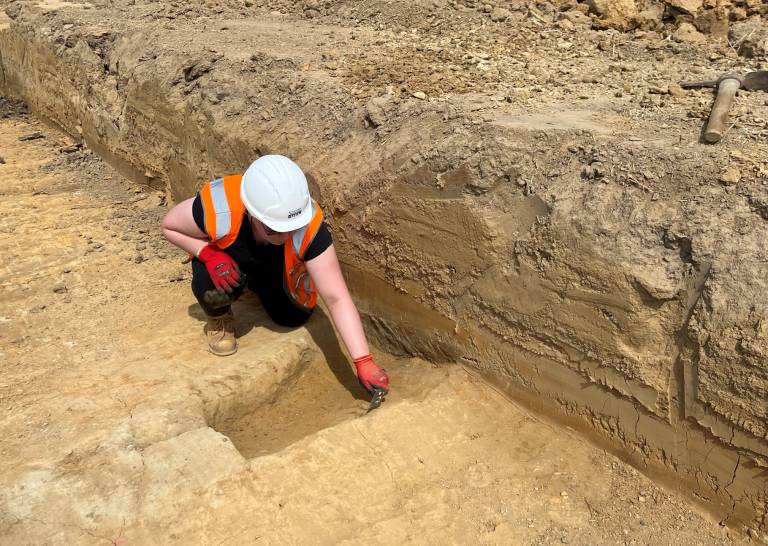
So, what was the best artefact you found?
My best on-site find was a delightful scraper in a very unassuming terminus in Felixstowe. It was brilliant to find one myself, and it was my first worked flint find. Despite the scraper being broken in half, I was completely enthralled as it is a textbook example of one!
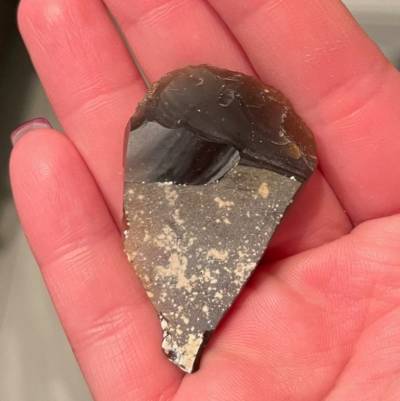
My first worked flint find was a small flint scraper. Despite being broken, it holds a special place in my memory!
What has been your most memorable site or feature to work on?
On the same site as I found the scraper, I was digging an interesting feature assumed to be a simple two-ditch relationship slot. It turned into three ditches, but had a terminus on one end with a deep pit underneath. It was all at the wrong angle, so more of the feature had to be excavated to get a better idea. It eventually turned into a strange sub-triangular slot with so many finds! It was an important learning curve, and so interesting and influential to my training that I will be writing about it in one of my essays when I return to my final year of university!
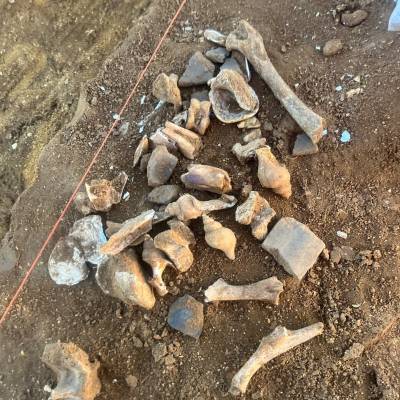
Excavating this feature resulted in many varied archaeological finds, such as bones, shells, pottery fragments, and more.
What has been your favourite artefact from post-excavation?
This is a tricky question, as I am torn between two artefacts. The first was found while doing finds washing; it was a tiny copper alloy pin hidden in the mud attached to a piece of pottery. It was such a surprise, totally unexpected, and was technically my first metal find.
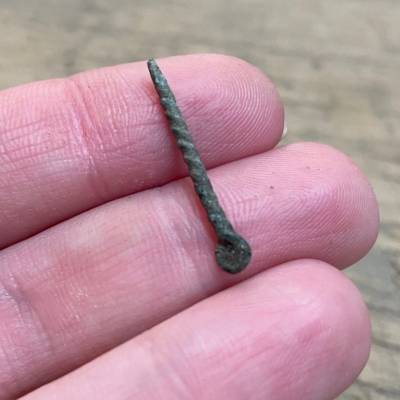
A copper alloy pin, found when washing mud from a piece of pottery. It was so delicate and beautiful that I could not look away!
The second was during my time with the Illustration team. Fiona Griffin and Lauren Gibson had been teaching me how to accurately portray pottery, and this incomplete, slightly warped bowl was when I think I started to get the hang of it.
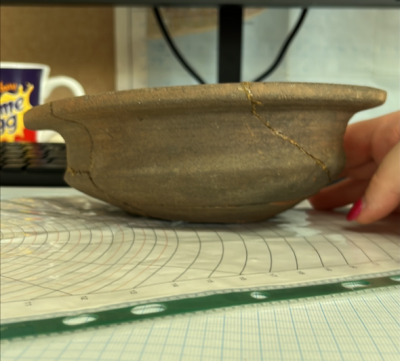
Studying this brown, slightly warped vessel allowed me to hone my illustration skills.
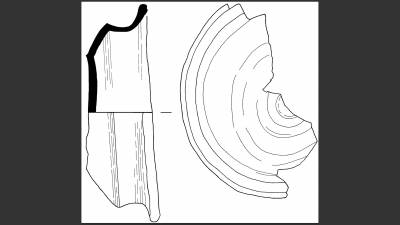
I completed an archaeological illustration of the vessel to industry standards.
I still have much to learn about archaeological illustration, and I am carrying on my learning in the final year of my degree thanks to the experience I gained at ASE.
What has been your favourite post-excavation activity?
I very much enjoyed documenting Registered Finds, as I got to see all types of objects of every material (the two photographed finds are examples – a possible copper-alloy Roman bead, and a possible copper-alloy Saxon needle with the end missing). Trista Clifford's knowledge was truly amazing, and I was able to research and form my own opinions on object dates too. I loved working with artefacts; it is perhaps a career I would like to pursue in the future. It would be a wonderful way to expand my knowledge.
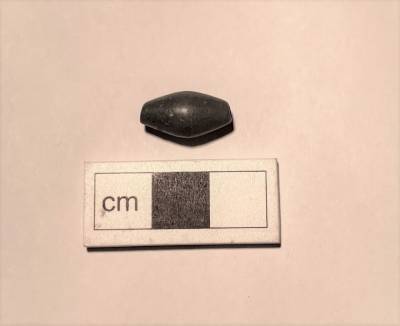
I loved interacting with such a variety of objects, such as this possible Roman bead.
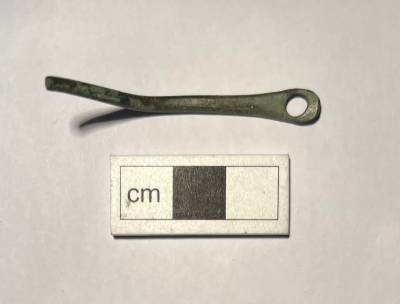
This needle was also a great find to spend time on, in addition to many other artefacts such as the bead.
What has been the main takeaway from your placement year as an archaeologist with ASE?
For the first time, I was able to experience work environments in both an office and in a constantly changing landscape (the fieldwork). Seeing how different site supervisors handled their sites and how different teams worked together was incredibly useful, as it forced me to constantly learn how to adapt and use my different strengths for the betterment of the group. Gaining different insights from all kinds of colleagues has broadened my perspectives to see both the challenges and the joys of commercial archaeology. I’d love to pursue non-field work, however being in the field was good to experience, and gave me fantastic training. Plus, the CSCS card is a valuable certificate that I will have for the next 5 years.
What are your next steps?
Before my placement year with ASE, I have always seen myself completing my undergraduate degree, and going straight into a Masters course. However, my time at ASE has made me realise that I enjoy working and that there are many avenues that I would like to explore.
By having evenings and weekends free of coursework and revision, I was able to allocate my time to volunteer at UCL's museums (mainly at the Petrie Museum of Egyptian and Sudanese Archaeology), and the National Trust's Sutton House. I found a love of public archaeology, of conversations with students, archaeologists, and the public, made all the more interesting by the insight I gained working with ASE. I hope to continue volunteering during my final year.
Longer term, I would love to get a job in the very competitive heritage sector. Public archaeology has become really important to me, and I hope to use my year with ASE to bridge the gap, just a little, between the public and the history around them.
...And that concludes our questions!
Thanks Victoria, it’s been a pleasure having you at ASE, and we wish you all the best in finishing the final year of your degree at UCL!
We’ll have more information on the sites and finds that Victoria mentioned in the next few months as our initial analysis on these concludes.
For more information on our placement opportunities at Archaeology South-East, view our placement webpage on what we offer.
And for more placement student insights like Victoria’s, you can catch up on our previous students Alex, Neehaarika, and Iva. View the blogs through this link.
 Close
Close

